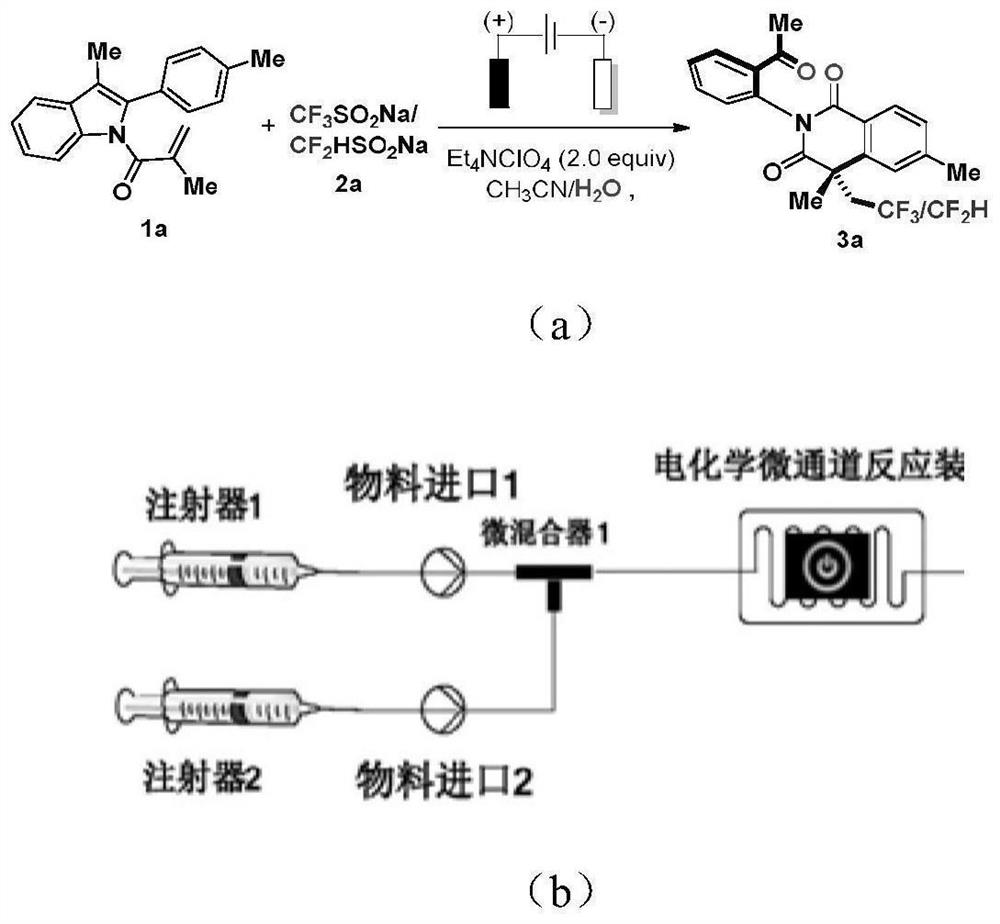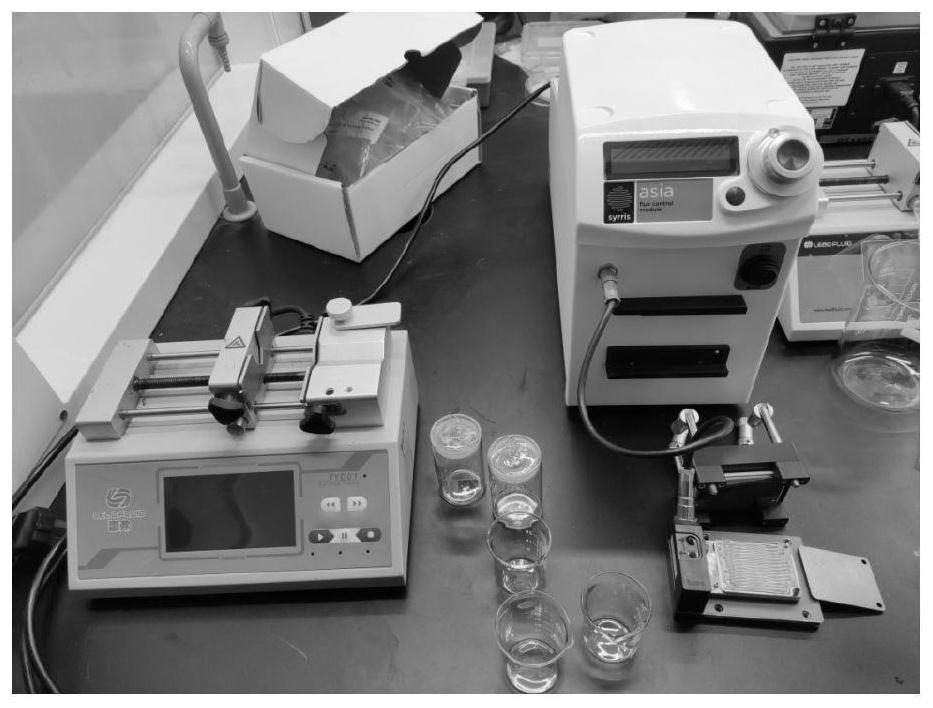Method for synthesizing fluorine-containing quinolinone compound by electro-catalyzing indole by using electrochemical micro-channel reaction device
A technology of microchannel reaction and quinolinones, which is applied in the direction of electrolytic components, electrolytic process, electrolytic organic production, etc., can solve the problems of high price and limited development, and achieve easy storage, shorten reaction time, and reduce the generation of by-products Effect
- Summary
- Abstract
- Description
- Claims
- Application Information
AI Technical Summary
Problems solved by technology
Method used
Image
Examples
Embodiment 1
[0065]
[0066] Microchannel reaction device see figure 2 , the reactants are as shown above, take R 1 is p methyl, R 2 is methyl, R 3 for hydrogen, R 4 N-substituted 2-arylindole reactant 0.058g (0.2mmol, 1.0equiv) that is methyl is dissolved in 3mL mixed solvent (H 2 O:MeOH=1:5) to obtain the first solution, weigh the trifluoromethyl source CF 3 SO 2 Na 0.062g (0.4mmol, 2.0equiv), electrolyte Et 4 NClO 4 0.092g (0.4mmol, 2.0equiv), with 3mL mixed solvent (H 2 (0:MeCN=1:5) was dissolved to obtain the second solution, which was loaded into syringes after being completely dissolved. The first solution and the second solution are simultaneously pumped into a reactor with a coil inner diameter of 0.5mm and mixed, the volume is 6mL, the flow rates of the first solution and the second solution are both 0.2mL / min, and pumped into the electrochemical microreactor , the anode is a carbon electrode, and the cathode is a platinum electrode. The reaction is carried out at a...
Embodiment 2
[0068] The method is the same as in Example 1, except that the electrolyte is changed to Et 4 NPF 6 0.11g (0.4mmol, 2.0equiv), TLC detection was performed after the reaction, and 70.82mg of the final product was obtained by EA:PE=1:10 silica gel column chromatography, with a yield of 91%.
Embodiment 3
[0070] The method is the same as in Example 1, except that the electrolyte is changed to nBu 4 NClO 4 0.11g (0.4mmol, 2.0equiv), TLC detection was performed after the reaction, and 69.5mg of the final product was obtained by EA:PE=1:10 silica gel column chromatography, with a yield of 89.3%.
PUM
 Login to View More
Login to View More Abstract
Description
Claims
Application Information
 Login to View More
Login to View More - R&D
- Intellectual Property
- Life Sciences
- Materials
- Tech Scout
- Unparalleled Data Quality
- Higher Quality Content
- 60% Fewer Hallucinations
Browse by: Latest US Patents, China's latest patents, Technical Efficacy Thesaurus, Application Domain, Technology Topic, Popular Technical Reports.
© 2025 PatSnap. All rights reserved.Legal|Privacy policy|Modern Slavery Act Transparency Statement|Sitemap|About US| Contact US: help@patsnap.com



